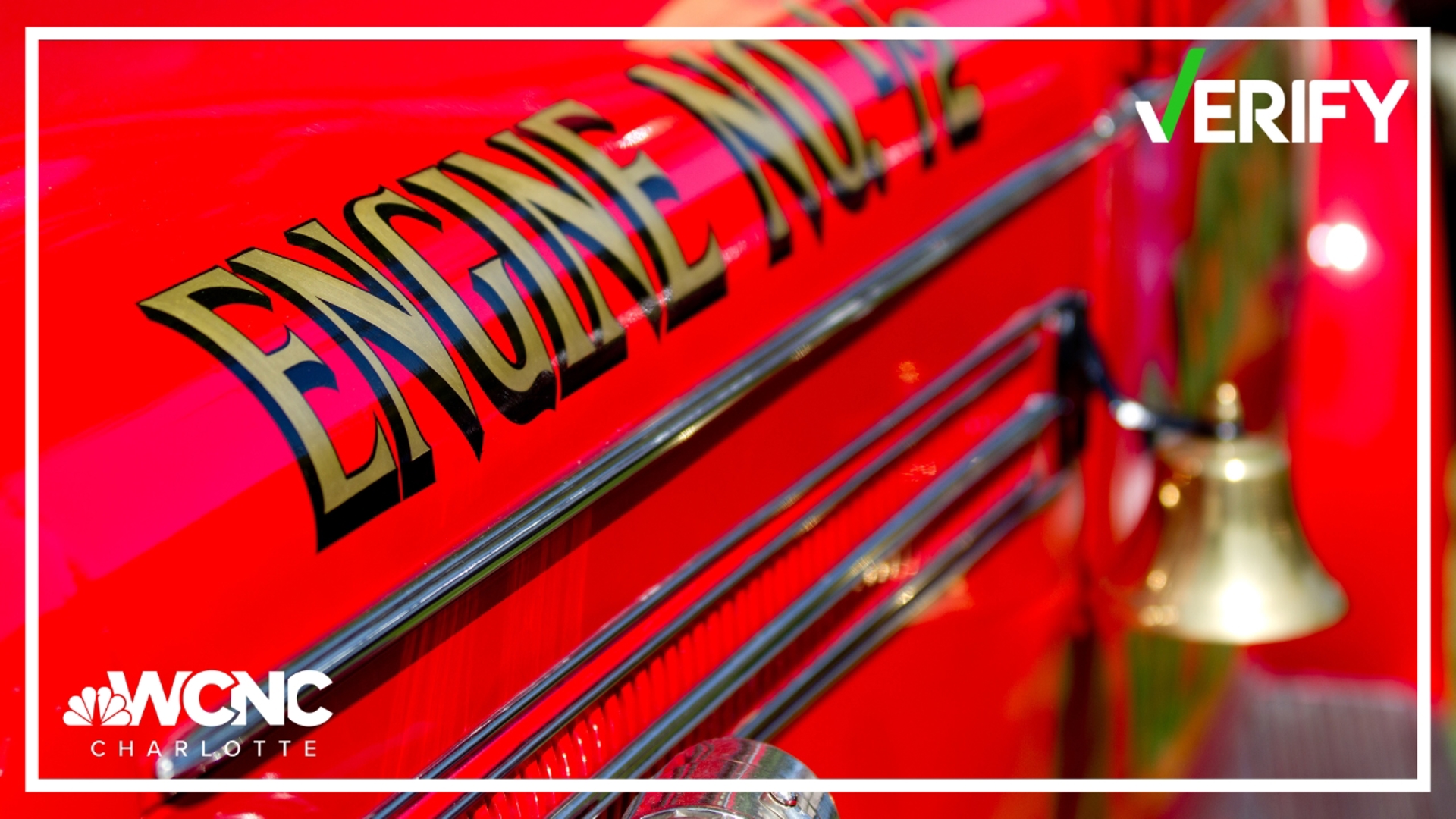CHARLOTTE, N.C. — Once fully constructed, Charlotte's newly-reconstruction Firehouse #30 will be the first all-electric firehouse in the Southeast, according to the city of Charlotte.
Ground for the new fire station was broken Monday in a ceremony at the site, which is located adjacent to the Charlotte Fire Department's training center on Shopton Road.
But there were a lot of questions swirling around social media regarding this all-electric firehouse.
OUR SOURCES
- Larry Daniels, senior director for Rev Group, the manufacturers of the EV firetrucks Charlotte Fire will be using
- The City of Charlotte
THE QUESTION
How long will the battery last in an emergency compared to a normal diesel-powered truck?
WHAT WE FOUND
Daniels said a vector electric fire truck can put water on a fire for about a three-to-four-hour period on a single charge, which he said is the typical time frame for a traditional truck to fight a house fire.
"The truck will last as long as a diesel-powered truck or any other truck," Daniels said. "It has the ability if the battery power gets to below 15% there is a backup system that kicks on automatically allowing the truck to continue to pump while it recharges when it reaches a certain state of recharge."
Once the truck is fully recharged the range extender would kick back off and Daniels said it would then operate on all electric power again.
THE QUESTION
What happens if the power goes out at the fire station?
WHAT WE FOUND
The city of Charlotte said as with all of the city’s critical buildings, they have backup energy generation, diesel generators in this case.
THE QUESTION
How do you charge these EV fire trucks?
WHAT WE FOUND
Daniels said before any cities purchase a vector electric truck, they first make sure the city is committed to the infrastructure it takes to support that vehicle.
"The city of Charlotte has invested in that technology with the green fire station that they were putting in," Daniels said. "So that station will have a charger that's dedicated to the Vector, that is a fast charger.”
Daniels said if a truck is down to about 15% of the charge, it will take about two hours to get the vehicle back to the full 85%. He said the trucks could also stop at all public charging stations and plug into those pay-for-power banks like any other electric vehicle.
And when it comes to the safety of these large electric vehicles? Daniels said they have tons of fail-safe measures to ensure they are working as they should.
"The batteries are fully sealed, they're electronically cooled or heated depending on the situation," Daniels said. "And they're electronically monitored. So if there are any disruptions or any issues inside of any of those batteries, they are designed to shut down."
Contact KJ Jacobs at kjacobs3@wcnc.com and follow him on Facebook, X and Instagram.
WCNC Charlotte's Verify series is all about trying to make a difference in the Carolinas by making sure the community has the correct information. WCNC Charlotte outlines concisely what we know and what we don't know. Sometimes the answer can be surprising. Watch previous stories where we verify social media claims in the YouTube playlist below and subscribe to get updated when new videos are uploaded.
VERIFY is dedicated to helping the public distinguish between true and false information. The VERIFY team, with help from questions submitted by the audience, tracks the spread of stories or claims that need clarification or correction. Have something you want VERIFIED? Text us at 704-329-3600 or visit VERIFY.

